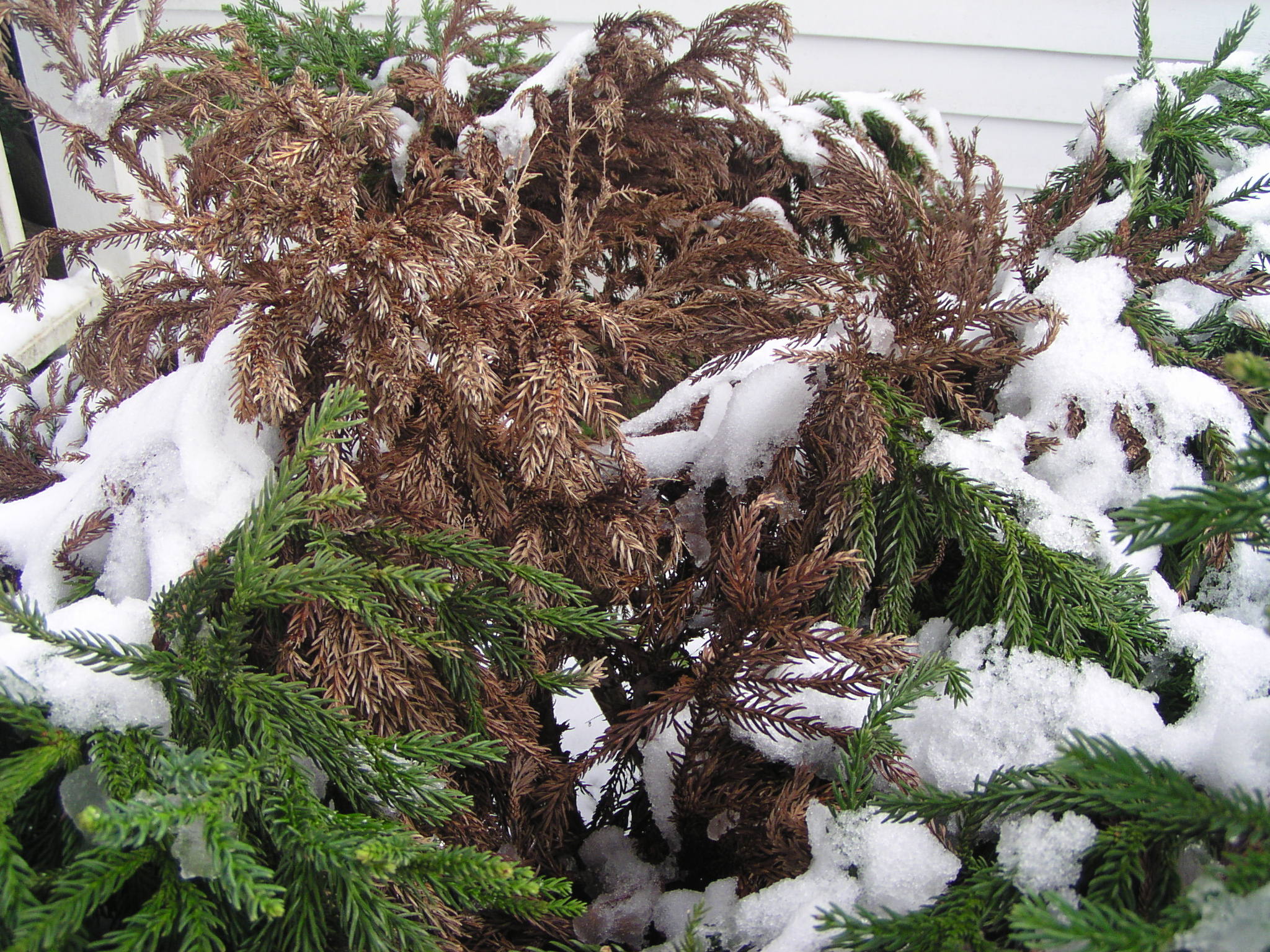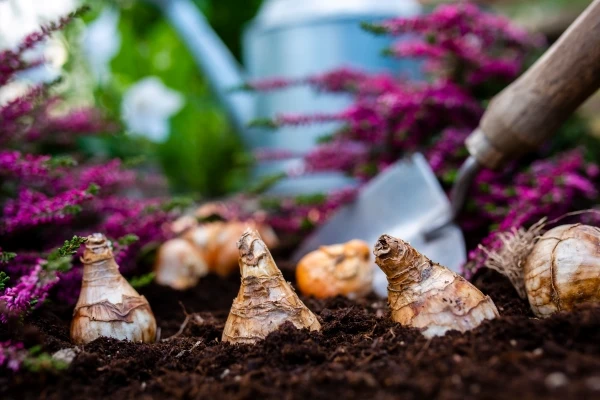
Your Late Winter Landscape: Assessing the Situation
It is anyone’s guess what this past winter’s weather will mean for your trees, shrubs, perennials, and lawn come spring.
Often, winter damage that occurs on trees and shrubs, notably evergreens, goes “unnoticed” during winter, and shows up in late spring. Fluctuations in temperature – warm one day, frigid the next – can be deadly for plants. Broadleaved evergreens such as rhododendron, holly or Aucuba, can exhibit browning or complete necrosis of their leaf margins (leaf scorch). Narrow leaved evergreens exhibit slight browning of needle tips when injury is slight. Extensive injury may result in browning and dropping of entire needles. Salt-based deicers can also cause burning – either directly to needles or leaves, or when taken up by the root system of the plant.
Where Do You Start
It all starts with walking your property with paper, pencil, and camera/cellphone. Make notes and take pictures of any damage to plant material – cracked branches, browning of evergreen foliage, bark tears to trees and shrubs.
Shrubs
Where does the snow go when you shovel, plow, or falls from the roof of your home? Often, plants can be buried under snow for periods of time until melt occurs. Snow load can cause breakage to crowns and branches of shrubs. Take a close look. If the branches are completely snapped off, use pruning shears to make a clean cut. Refrain from any other pruning until the plant begins to push new growth this spring. Determine if additional pruning is needed then.
Trees
Mature trees can experience dangling broken branches due to winter winds and weather. Always – two feet on the ground if you elect to do any pruning. Better yet, leave any tree work to an experienced arborist that has the right equipment to get the job done safely.
Lawns
Winter damage to your lawn can show up as browning for assorted reasons. Culprits to consider salt-based deicers used along walkways and driveways, snow mold patches, or voles that create underground tunnels directly under the lawn. It’s still too early to seed/repair the lawn; early April is just around the corner. Sand that is used on snow- or ice-covered walkways and drives can find its way into the lawn. Thick layers of sand should be carefully removed to allow the grass to breathe. Same for any gravel that collects in lawns or landscape beds from snow plowing or shoveling.
Perennials and Roses
Fluctuating soil temperatures can cause perennials and rose to heave, especially if they were planted in 2021. Frozen soil one day; thawed the next can cause plants to lift from the ground. Replant as soon as possible to avoid drying to the roots. And when you replant, keep the same grade – do not plant deeper. Die-back on rose canes is often noticed, prune back canes in late March. Wait to remove any dead leaves that could be protecting the crown of the plant until early April.
Detective Work
Flex it! Check a few twigs. Do they flex or break? A flexible twig is alive. If it breaks, it is most likely dead. Wait until new growth resumes this spring, you will know exactly where to prune.
Scratch it! With your fingernail, carefully scrape away the bark on a questionable twig. Green tissue underneath the bark is a positive sign. Brown or gray tissue signals damage or death. No pruning is needed yet. Worth repeating – wait until new growth resumes this spring, you will know exactly where to prune.
What About the Buds? Gardeners have been known to sacrifice a few buds to check for healthy tissue. Same scenario – green tissue inside the buds is what you want to see.
Patience is a Virtue!
Do not be in a rush to prune back growth that might appear dead. Once it is removed, it cannot be glued back on. And remember, not all plants flush new spring growth at the same time. If you are itching do some gardening work, clean up branches, twigs, and other debris from landscape beds and lawns. Spring chores are just around the corner.



